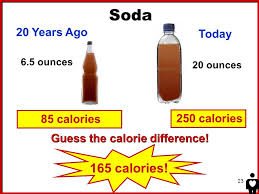Change Your Walk, Change Your Mood?
Did you know that your walk reflects your mood? Trudge along slump-shouldered and you appear depressed. Put a little pep in your step and you look happy. Interestingly, it appears the reverse may be true as well. Changing your walking style can affect your mood for better or worse, according to new research from Canada’s Queen’s University. Building on the knowledge that how we feel affects the way we walk, the investigators wanted to find out if changing the way we walk can affect mood. They put volunteers on treadmills and prompted some of them to walk in a depressed style and others to walk as if they were happy. To begin, the study participants were shown a list of positive and negative words such as “pretty,” “afraid” and “anxious.” While the volunteers were on the treadmill their gait and posture were tracked. After the treadmill test, the volunteers were asked to write down as many words as they remembered from the list they were shown earlier. The responses revealed that those whose walking style was depressed remembered more negative words, and that a depressed walking style did create a more depressed mood. Breaking this cycle might help with treatment of depressed patients, the researchers suggested.
What Does 250 Calories Mean to You?
Researchers at Johns Hopkins found that posting signs about how many miles customers would have to walk or run to burn off the 250 calories a sugary drink contains was enough to encourage some teens to opt for healthier choices. The study, performed in Baltimore corner stores, was designed to show that simply posting the calorie counts for sweet drinks doesn’t change any habits, but that providing real world information on how those calories translate to miles of walking or running can make an impression great enough to influence behavior. Before the signs were put up, the researchers reported that 98 percent of drink purchases by teens in the stores were sugary beverages. Afterward, regardless of the type of sign, the percentage of sugary drink purchases dropped to 89 percent. The investigators found that the most effective sign was the one informing teens that they would have to walk five miles to burn off 250 calories. Of the 35 percent of the teens who said they saw the signs, 59 percent said they believed them, and 40 percent of them said that they bought something else – a smaller drink or water or nothing at all – as a result. The investigators observed 3,098 purchases, mostly by African Americans between the ages of 12 and 18.
http://www.drweil.com/drw/u/WBL02426/What-Does-250-Calories-Mean-to-You.html





 Hi I’m Catherine, founder of Wine Women And Chocolate. Want to become a contributor for Wine, Women & Chocolate? Interested in sharing your unique perspective to a group of supportive, like-minded women?
Hi I’m Catherine, founder of Wine Women And Chocolate. Want to become a contributor for Wine, Women & Chocolate? Interested in sharing your unique perspective to a group of supportive, like-minded women?